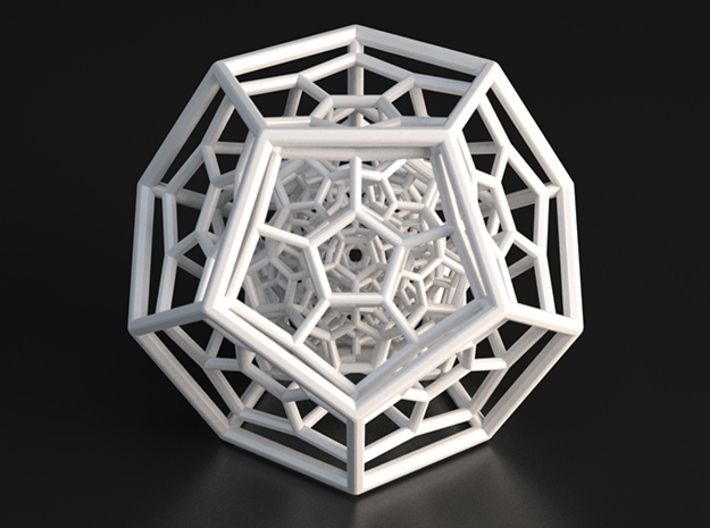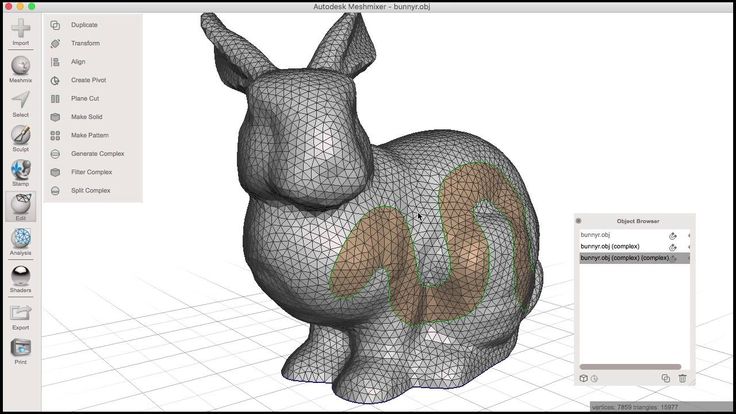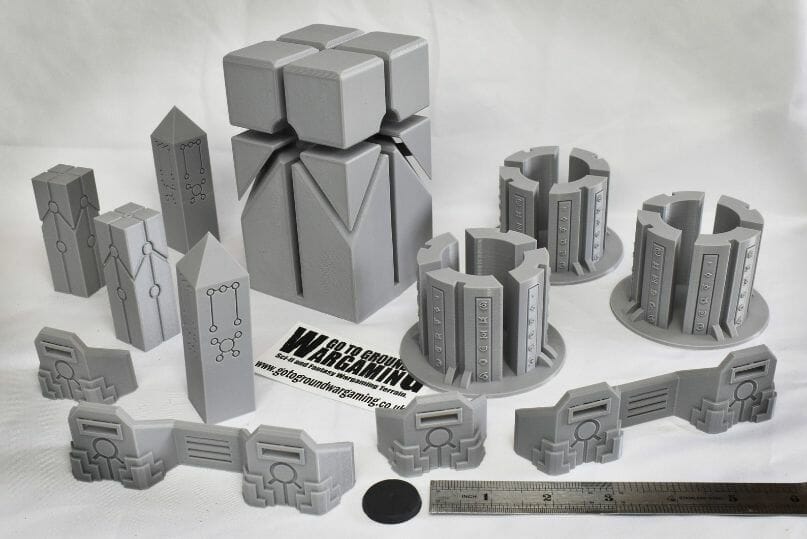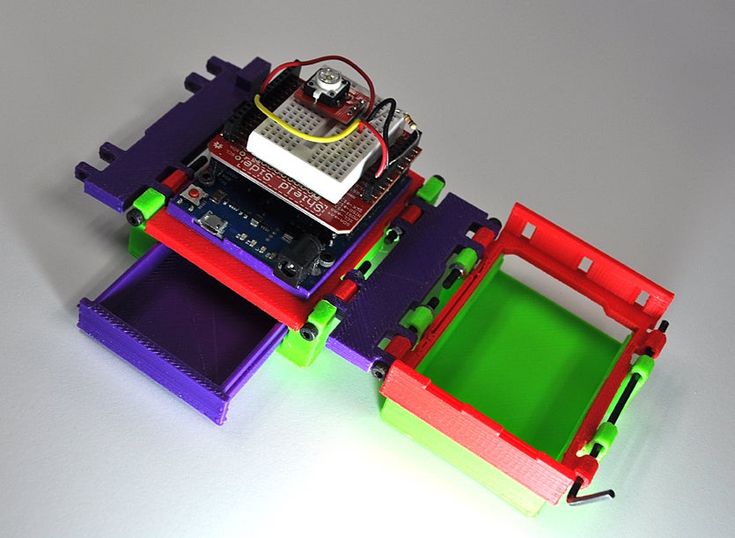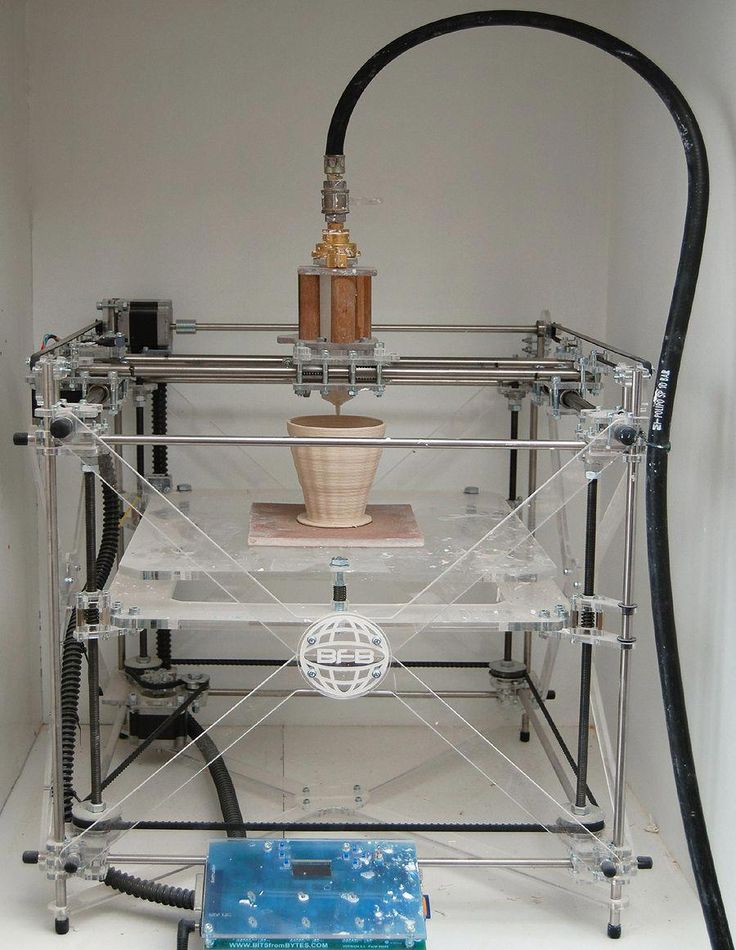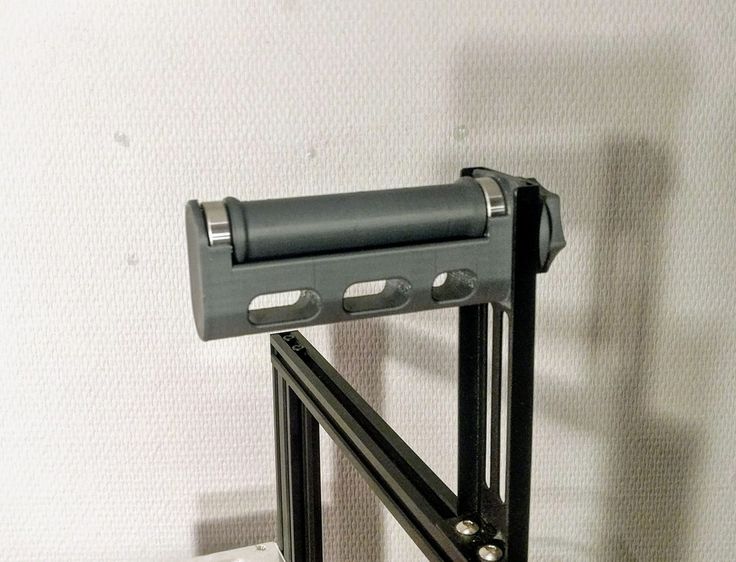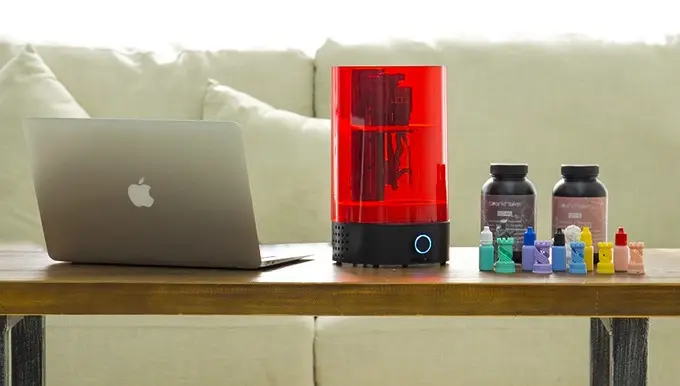Mini 3d printers
The 8 Best Mini 3D Printers 2022 (ALL Price Ranges!)
Advances in 3D printing have created more accurate and faster 3D printers that are smaller and cheaper than ever before, leading to the current range of mini 3D printer options that can fit on your desktop. Many of these affordable 3D printers cost just a few hundred dollars, take up little space, and can produce fantastically accurate plastic parts.
Therefore, we’ve ranked some of the best small 3D printers around, listing their main advantages, so you can choose which best suits your 3D printing needs.
- If you’re a beginner to 3D printing, you may also want to check out our guide to the best 3D printers for beginners
- We also have a ranking of the best 3D printers for kids
- We also have a ranking of the best resin 3D printers
Best Mini 3D printers
| Name | Build Volume(mm) | Price | Where to buy | Alternative purchase option |
|---|---|---|---|---|
| LABISTS Mini X1 | 100 x 100 x 100 | $150 | Amazon here | |
| Monoprice Select Mini V2 | 120 x 120 x 120 | $219 | Amazon here | |
| Monoprice Mini Delta | 110 x 110 x 120 | $190 | Amazon here | |
| Flashforge Finder / Finder Lite | 140 x 140 x 140 | $250 / $299 | Finder Lite on Amazon here | Finder on Amazon here |
| Elegoo Mars 2 Pro | 115 x 65 x 150 | $250 | Elegoo here | Amazon here |
| Flashforge Adventurer 3 / 3 Lite | 150 x 150 x 150 | $369 / $449 | Amazon here | 3DJake UK & Europe |
| XYZprinting Da Vinci Mini W+ | 150 x 150 x 150 | $209 | Amazon here | |
| Prusa Mini | 180 x 180 x 180 | $39 | Prusa Store here |
3DSourced is reader-supported. When you buy through links on our site, we may earn an affiliate commission. Learn more
Best Mini 3D printers (under 150mm cubed build volume)
LABISTS Mini X1 3D printer — Smallest 3D printer in the world?
- Small 3D printer price: $140 — Available on Amazon here
- Build volume: 100 x 100 x 100 mm
- Print speed: 40mm/s
The complete miniature 3D printer and a great 3D printer for kids to try out 3D printing, the LABISTS Mini 3D printer is tiny, basic, and cheap.
With a tiny 3D printing volume of just 100 x 100 x 100 mm it can fit almost anywhere, and the lack of an enclosure makes it even easier to fit in even the most crowded households. Though a 3D printer kit, the LABISTS Mini X1 3D printer comes in just a few parts, and shouldn’t take more than a few minutes to get print-ready if you follow their assembly video shown below.
Despite the tiny size and low price, the Mini X1 3D printer offers up to 50-micron accuracy and surprisingly smooth surface finish, though it can only print PLA.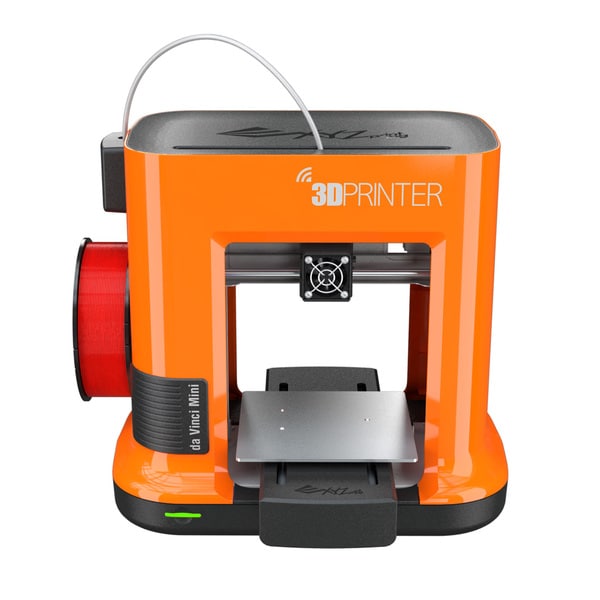
It comes with some PLA filament to get you started, and with the simple interface and lack of complex features, is an ideal 3D printer for beginners and kids to get acquainted with 3D printing. It comes with its own easy-to-use 3D slicer, and is also famed for being quiet — able to print at under 60db.
This could quite possibly be the smallest 3D printer you can buy commercially, so if you’re just dipping your toe into 3D printing, this could be the one for you.
Monoprice Select Mini V2 — Mini Monoprice 3D printer
- Mini 3D printer price: $219 — Available on Amazon here
- Build volume: 120 x 120 x 120 mm
- Print speed: 55m/s
The Monoprice Select Mini V2 is another popular mini 3D printer by successful technology manufacturer Monoprice, and an effective yet portable 3D printer priced at just $200. It’s the ideal entry level 3D printer, coming with no fancy extra features. You just get the printer, some filament to get you started, and some pre-installed 3D printer models.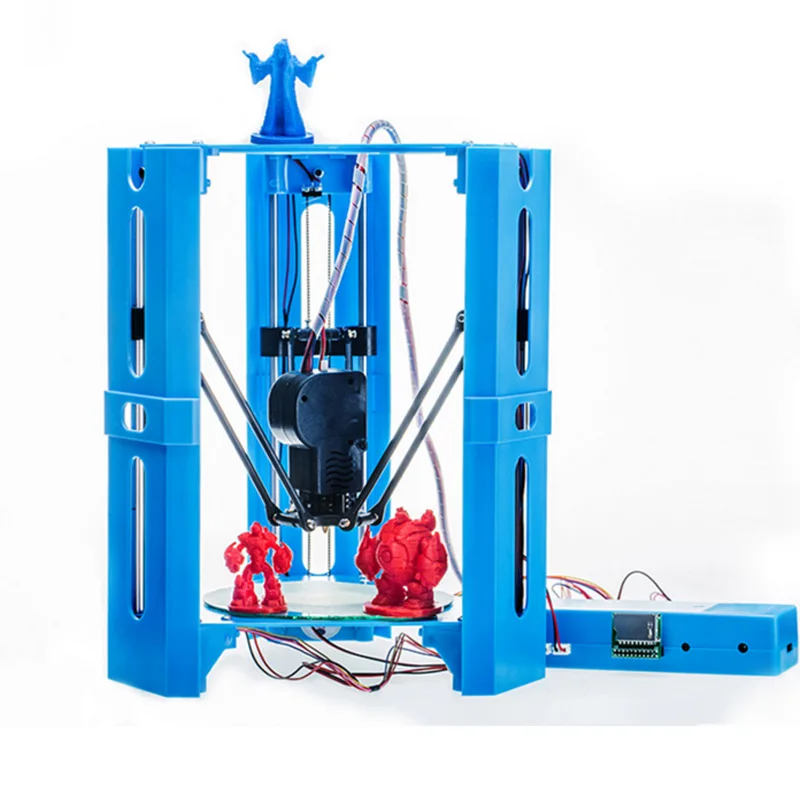
- To download your own 3D printer models, check out our list of the best sites for STL files
We recommend the Select Mini V2 for producing small parts such as 3D printing 28mm miniatures or other tiny 3D prints. It’s not well suited for larger parts, but for those you should check out our large 3D printer ranking or our yearly best 3D printer recommendations.
Overall, the Select Mini V2 is a versatile, compact 3D printer that surprisingly can still print materials like ABS, PVA and wood filament; and for the price tag, is a fantastic introductory 3D printer.
Monoprice Mini Delta — delta mini 3D printer
- Mini 3D printer price: $180 — Available on Amazon here
- Build volume: 110 x 110 x 120 mm
- Print speed: up to 150mm/s
With a small 3D printing build volume of just 110 x 110 x 120 mm, the Monoprice Mini Delta really lives up to its name as a mini printer. The Monoprice Mini Delta is the only delta 3D printer on our small 3D printer buyer’s guide, allowing it to print very fast for such a compact machine, at up to 150mm/s. It is almost certainly the fastest 3D printer in its size range.
It is almost certainly the fastest 3D printer in its size range.
Despite the low weight and high speed, this small home 3D printer is built to be sturdy and durable: the aluminium and steel frame anchors it down to ensure print quality is precise and prevent any vibrations from affecting your model’s surface finish.
The Mini Delta is a tiny 3D printer but still features a heated bed, so 3D printing ABS and other filaments should be no problem with the right print settings.
The Monoprice Mini Delta is also very precise, at up to 50 microns, and unlike most delta printers comes fully assembled rather than as a 3D printer kit. As a result, it’s a great 3D printer for beginners, and extremely simple to operate and print with – you can even print via WiFi, a rare feature on small, inexpensive printers.
Flashforge Finder / Finder Lite
- Price: Finder Lite = $250 — Available on Amazon here / Finder = $299 — Available on Amazon here
- Europe: Available on 3DPrima Europe here
- Build volume: 140 x 140 x 140 mm
The original Flashforge Finder was a big success, becoming as highly rated as the best-selling Creator Pro. The new Finder Lite has the same tiny 140 x 140 x 140 mm build volume, but has costs $50 less due to the lack of WiFi 3D printing feature.
The new Finder Lite has the same tiny 140 x 140 x 140 mm build volume, but has costs $50 less due to the lack of WiFi 3D printing feature.
The Flashforge Finder Lite is built to be quiet, can print PLA, TPU and copper PLA, and comes with a few popular 3D printer models to get you started on your 3D printing journey. Flashforge’s patented nozzle has been upgraded, and the feeder tube and extruder have been improved to prevent jams and improve your prints’ surface finish.
The Lite version comes with all the latest features you have come to expect from a small 3D printer costing around $300, including auto leveling and calibration, a large 3.5 inch touchscreen, and a removable build platform which makes removing your printed models easier than ever. Overall, it is another great mini 3D printer for those with little space or those who just want to start small.
Elegoo Mars 2 Pro — great small 3D printer (for resin)
- Mini 3D printer price: $250 — Available at Elegoo store here / Available on Amazon here
- Build volume: 115 x 65 x 150 mm
- Print speed: 22.
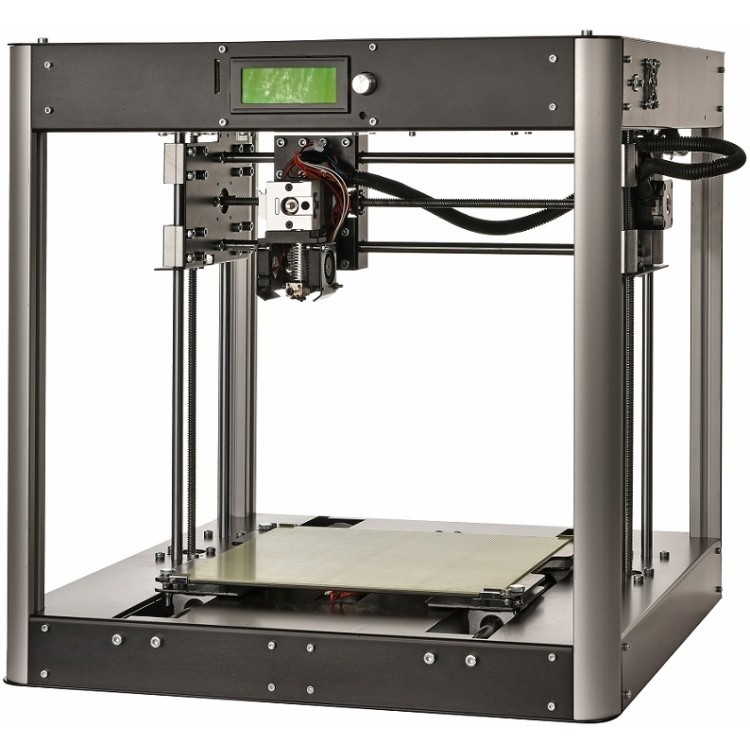 5mm/hour
5mm/hour
The original Elegoo Mars is one of the best-selling resin 3D printers of the last few years, and now Elegoo have released the Mars 2 Pro, with a number of key upgrades.
Though a good build size for an LCD 3D printer, most desktop makers creating tabletop miniature 3D prints would still consider the build volume small, especially compared to FDM printers.
Several key upgrades are built into the Elegoo Mars 2 Pro, including improved precision via the improved Z-axis linear guide-way structure, leading to smoother layers with less obvious layer lines. The Mars Pro is also made safer by the silicone seal that can be placed on the printer’s cover to prevent any resin leaking, which could otherwise cause safety issues.
It’s a lightweight and compact 3D printer that can produce tiny 3D prints with extraordinary accuracy – our best 3D printer for miniatures guide recommends it too – and ideal for those who want precise parts and have the skills to handle a resin printer.
Read our full review: Elegoo Mars 2 Pro review and testFrom our Elegoo Mars 2 Pro unboxing and testing
Flashforge Adventurer 3 / 3 Lite
- Price: $369 for Adventurer 3 Lite — Available at Flashforge here / Available on Amazon here
- Adventurer 3 price: $449 — Available at Flashforge here / Available on Amazon here
- Build volume: 150 x 150 x 150 mm
- Print speed: best at around 50mm/s
A reliable mini 3D printer with a closed build chamber, the Flashforge Adventurer 3 Lite is for those who don’t mind spending a bit extra (as compared with the Mini Delta or Maker Select) for better print conditions and better ABS 3D printing.
With a minimum layer height of 50 microns, it’s perfect for 3D printing miniatures and other small models. The closed chamber means that ABS and other filaments will warp less, and all these extras come in a compact 3D printer costing under $500.
The 150 x 150 x 150 mm build volume is small, but we would not consider this a tiny 3D printer – most day-to-day projects should be printable with ease, or can be broken up into a few separate prints and stuck together. The nozzle is easily switchable, for example if you want to print faster with a larger nozzle, and overall it is a reliable and low-cost small 3D printer with a closed chamber for effective 3D printing.
The nozzle is easily switchable, for example if you want to print faster with a larger nozzle, and overall it is a reliable and low-cost small 3D printer with a closed chamber for effective 3D printing.
It’s $80 cheaper than the Adventurer 3, with the only noticeable differences is that the Lite version doesn’t have the HD camera that the Adventurer 3 has. It’s your choice whether this affects your choice, but we’ve included links to both above to make things easier for you.
XYZprinting Da Vinci Mini W+ — good small 3D printer under $300
- Small 3D printer price: $209 — Available on Amazon here
- Build volume: 150 x 150 x 150 mm
- Print speed: maximum 120mm/s
XYZprinting not only make some of the most popular small FDM 3D printers around, but are also famed for their industrial 3D printers, including their MfgPro230 xS SLS 3D printer. Their most successful small-scale 3D printer, the Da Vinci Mini, is inexpensive, simple to use, and reliable – you can trust it to get the job done.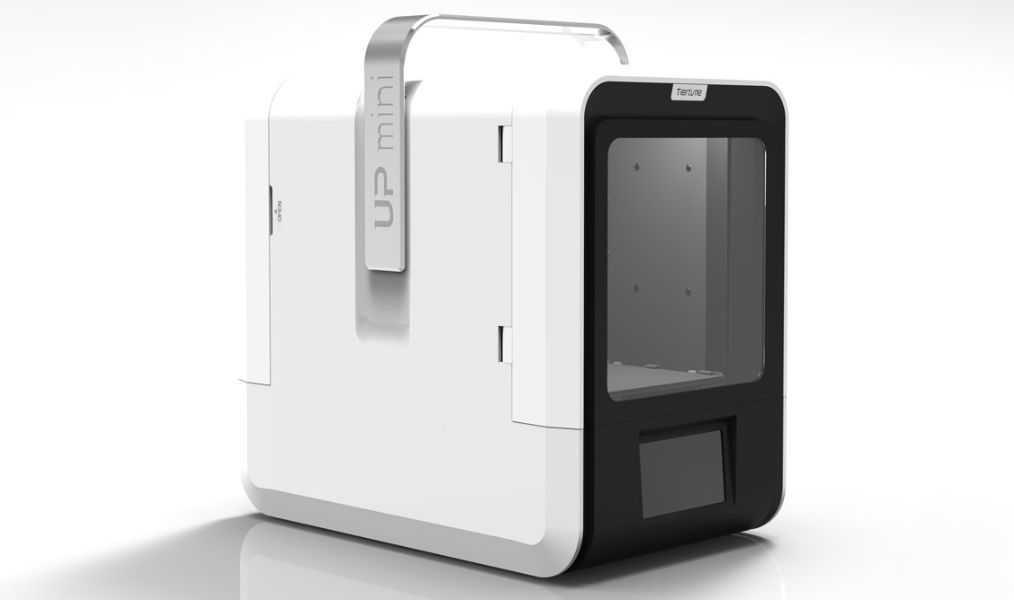
With a precision of 100 microns for each layer printed, you can be sure of a quality 3D print even for the low price. It can print PLA and PETG and can also be upgraded to 3D print metallic and carbon PLA blends with XYZ’s hardened steel nozzle.
A major advantage is WiFi printing, a feature that not many mini 3D printers have, saving time and hassle from continuously removing and inserting SD cards and USBs from your laptop to the printer. The Da Vinci Mini 3D printer’s ability to level itself makes it perfect for beginners looking to start small, and overall it’s a great introductory printer – though be careful as it is very difficult to use third party filaments, so you may be restricted to XYZprinting’s own-brand PLA.
Best Small 3D printers (under 200mm cubed)
Prusa Mini — best small 3D printer
- Price: $399 — Available on Prusa Store here
- Build volume: 180 x 180 x 180 mm
The Prusa MK3S+ is too large to consider for a small 3D printer ranking, but the Prusa Mini 3D printer offers most of the benefits, in a smaller package.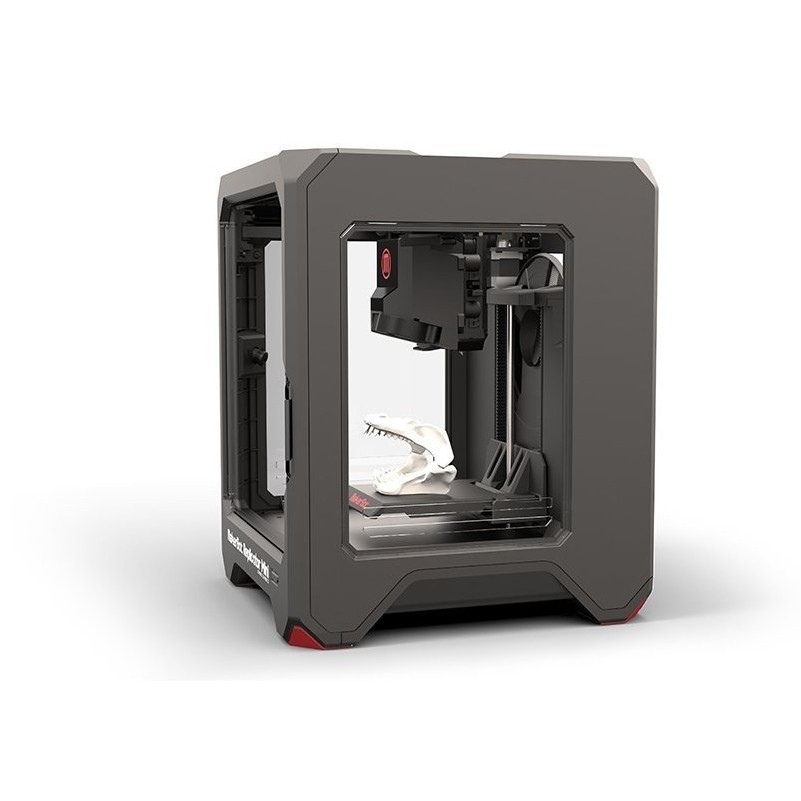
With a 180 x 180 x 180 mm max build volume, it’s a portable 3D printer that can fit on most desktops, but it can still calibrate itself, with the same 0.05mm precision that the MK3S+ has.
Some differences are that the Prusa Mini needs to be upgraded to have the filament sensor, and it can’t heat up to quite the same extruder temperatures. But you can still 3D print standard PLA and ABS, as well as PETG, flexibles and ASA.
The Mini comes with Prusa’s own PrusaSlicer 3D slicer, and if you run into any problems, you can speak with Prusa’s support team 24/7. Overall, it’s a great lower cost RepRap 3D printer for great quality, reliable prints at a lower price.
If you liked this ranking, you may also want to view:
- Our guide to the best FDM 3D printers
- Our guide to the best dual extruder 3D printers
- Our guide to the best large scale 3D printers
- Our 3D pen buyer’s guide
The Best Cheap 3D Printers for 2022
While we'd hesitate to call 3D printing a mature technology, you might say it has reached its teenage years.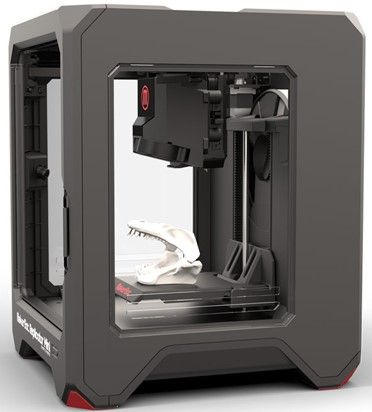 Through their first decade-and-change, 3D printers have come down in price, grown easier to set up and operate, and become more reliable. And you may pay less than you expect: Many once-high-end features have migrated down to inexpensive models.
Through their first decade-and-change, 3D printers have come down in price, grown easier to set up and operate, and become more reliable. And you may pay less than you expect: Many once-high-end features have migrated down to inexpensive models.
PC Labs has been reviewing 3D printers since 2013. Today, the state of 3D printing is strong, but that wasn’t always the case. For the first several years, it was often an adventure getting one of these printers up and running, let alone successfully through our testing regimen. Issues with filament-based—aka fused filament fabrication (FFF) or fused deposition modeling (FDM)—printers were abundant.
Filament feeders had to be coaxed into delivering filament from the spool to the extruder. Print beds had to be manually aligned. The extruder or hot end had to be positioned just right to minimize the gap between the nozzle and the build plate (the flat surface on which the object is printed). Objects frequently stuck to the build plate, and required careful, sometimes unsuccessful, efforts to pry them off.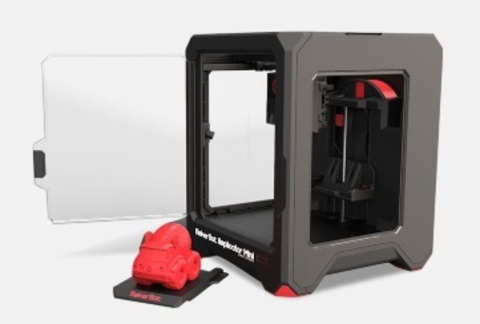 These and other issues required painstaking effort to resolve, often combined with calls to tech support.
These and other issues required painstaking effort to resolve, often combined with calls to tech support.
Not so much anymore. While they can still be rebellious at times, 3D printers have grown up a lot, and achieving the 3D printer basics has gotten a lot less likely to end in a shouting match over small things. And they've gotten a lot more affordable, too, for curious DIY-ers and hobbyists to try.
If you're in the market for a beginner or low-cost 3D printer, it's important to know how lower-end models differ. Read on for mini-reviews of the top budget 3D printers we've tested. After that, we go into more detail on understanding the 3D printer specs and tech relevant to beginning buyers. Ready to take the plunge? Read on.
Original Prusa Mini
Best Overall Budget 3D Printer
4.5 Outstanding
Bottom Line:
It requires assembly and calibration care (plus shipping from the Czech Republic), but the Original Prusa Mini is a compact, open-frame 3D printer that consistently produces superb-quality output for a great price.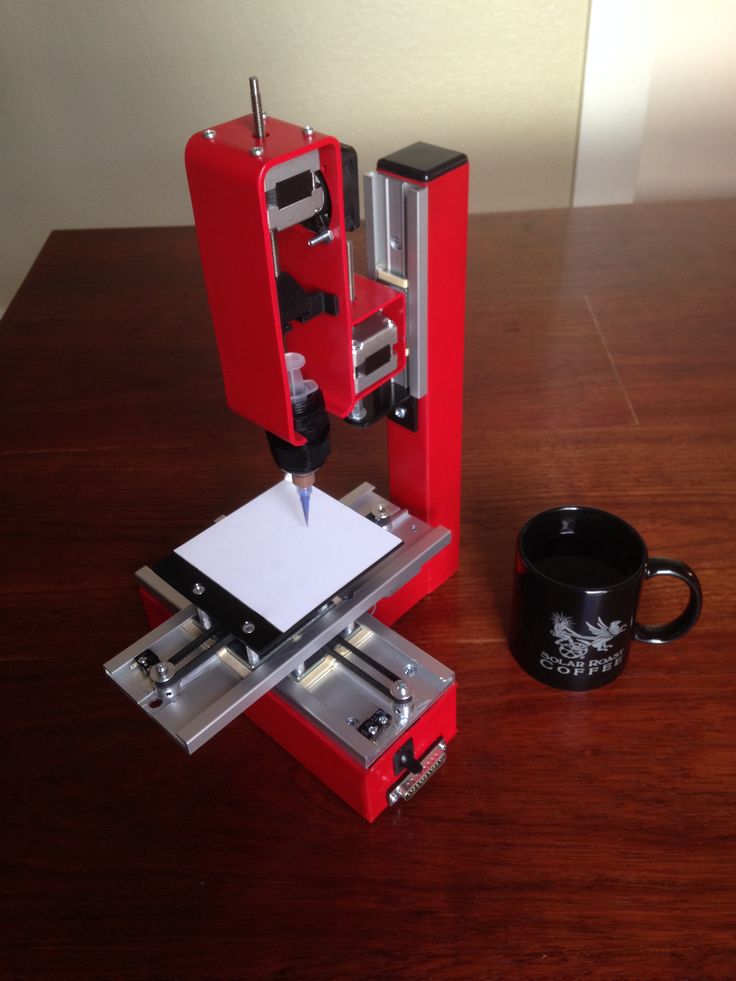
PROS
- Top-notch object quality
- Supports a variety of filament types
- Useful, professionally printed user guide
- Great support resources
- Versatile, user-friendly software
CONS
- First-layer calibration can be tricky
- Only includes starter packets of filament
- Requires monitoring if young children or pets are around
| Sold By | List Price | Price | |
|---|---|---|---|
| Prusa Research | $399.00 | $399.00 | See It (Opens in a new window) |
Read Our Original Prusa Mini Review
XYZprinting da Vinci Mini
Best Budget 3D Printer for Schools, Community Centers
4.0 Excellent
Bottom Line:
The XYZprinting da Vinci Mini is a consumer-oriented 3D printer that provides a winning combination of low price, ease of setup and use, solid print quality, and smooth, misprint-free operation.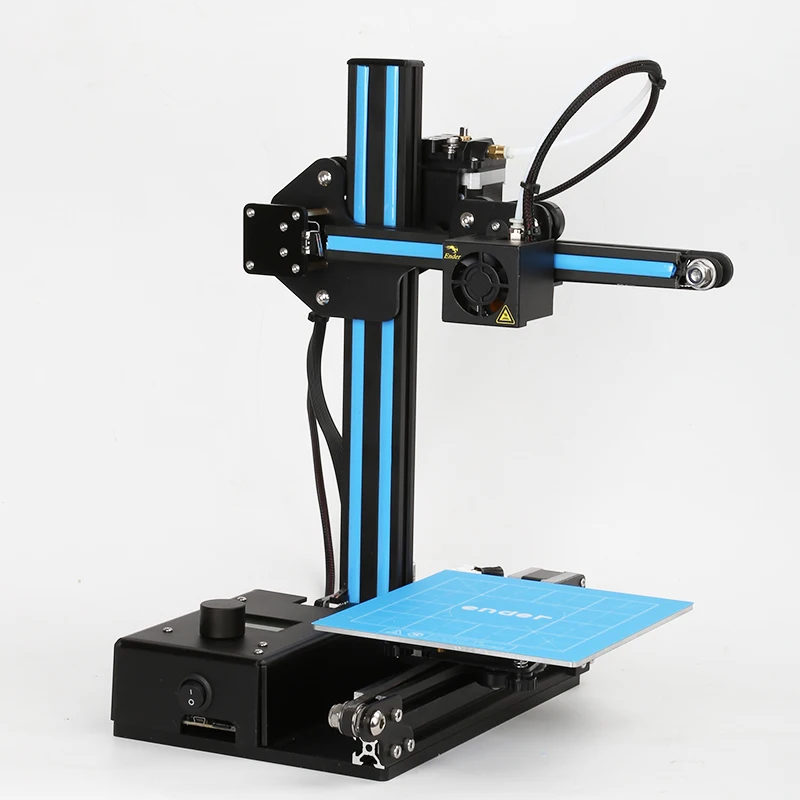
PROS
- Very low price.
- Reasonably priced filament.
- Good print quality.
- No misprints in testing.
- Easy setup and operation.
- Quiet.
- Prints over a USB or Wi-Fi connection.
CONS
- Occasional problems in trying to launch prints.
- Removing printed objects from the print bed is sometimes tricky.
| Sold By | List Price | Price | |
|---|---|---|---|
| Walmart | $199.95 | $199.95 | See It (Opens in a new window) |
| Amazon | $199.95 | $199.95 | See It (Opens in a new window) |
Read Our XYZprinting da Vinci Mini Review
Toybox 3D Printer
Best Budget 3D Printer for Children
4.0 Excellent
Bottom Line:
The Toybox 3D Printer works well as a model designed for children, offering reliable printing from a browser or mobile device and a few thousand toys to print, plus creative options to output drawings or photos.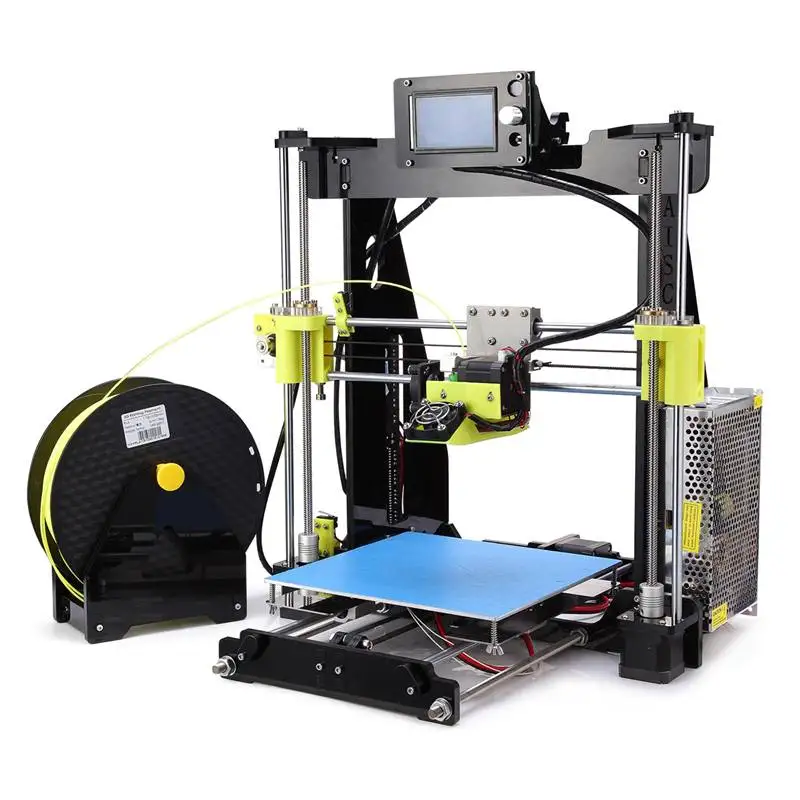 Just bear in mind the tiny build area.
Just bear in mind the tiny build area.
PROS
- Reliable, misprint-free printing
- Easy setup
- One-touch operation
- Well-composed help resources
- Access to more than 2,000 printable toys and projects
- Lets you create your own printable designs
CONS
- Tiny build area
- Not ideal for importing 3D files created elsewhere
| Sold By | List Price | Price | |
|---|---|---|---|
| Amazon | $299.00 | $299.00 | See It (Opens in a new window) |
| Toybox Labs | $379.00 | $299.00 | See It (Opens in a new window) |
Read Our Toybox 3D Printer Review
Monoprice Mini Delta V2 3D Printer
Best Budget 3D Printer for Beginners, Non-Techies
4.0 Excellent
Bottom Line:
3D printing gurus will be intrigued by the Monoprice Mini Delta V2's use of the delta rather than Cartesian coordinate system, but beginners will just enjoy its low price, ease of use, and speedy printing.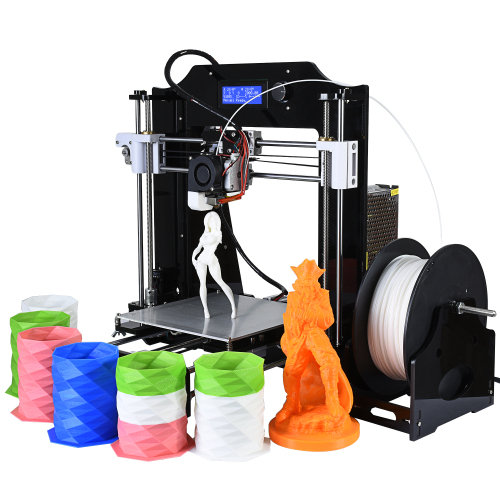
PROS
- Sub-$200 price
- Quick, nearly misprint-free printing
- Easy setup and operation
- Sturdy steel-and-aluminum frame
- Supports multiple filament types
CONS
- Tiny build area
- So-so print quality
- Mere one-year warranty
| Sold By | List Price | Price | |
|---|---|---|---|
| Amazon | $179.99 | $179.99 | See It (Opens in a new window) |
Read Our Monoprice Mini Delta V2 3D Printer Review
Anycubic i3 Mega S
Best Budget 3D Printer With an Open Design, Big Build Area
3.5 Good
Bottom Line:
The Anycubic i3 Mega S, an inexpensive open-frame 3D printer, produced decent-quality prints in our testing. To get the most out of it, though, may require precise calibration.
PROS
- Modestly priced
- Large build area for an inexpensive printer
- Supports a variety of filament types
- Generally solid print quality
- Uses well-known Cura software
CONS
- Finicky print-platform alignment
- Supported coils of filament are small
- Poorly placed spool holder
| Sold By | List Price | Price | |
|---|---|---|---|
| Amazon | $229.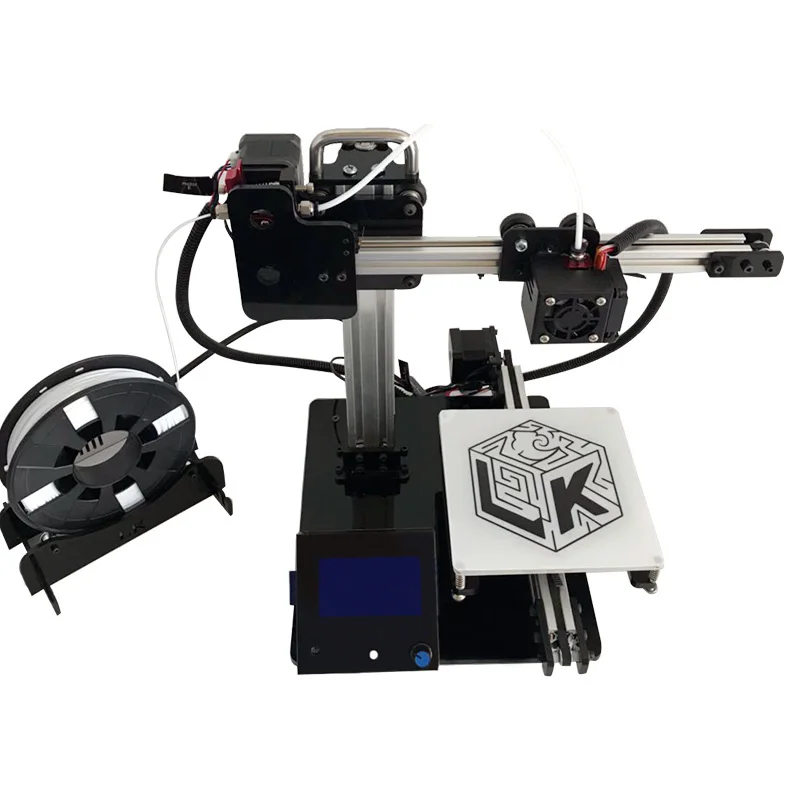 98 98 | $229.98 | Check Stock (Opens in a new window) |
Read Our Anycubic i3 Mega S Review
Anycubic Vyper
Best Budget 3D Printer for the Biggest Build Area Possible
3.5 Good
Bottom Line:
Anycubic's modestly priced Vyper whips up large 3D prints on its open-frame design, and provides automatic print-bed leveling. Just know that some minor assembly is required—and printed objects may require a bit of cleanup.
PROS
- Relatively large build area
- Automatic bed leveling
- Simple assembly
CONS
- Short (one-year) warranty
- Includes only a small starter filament coil
- Using Cura software with the Vyper requires tweaking a couple of settings
- Test prints showed some "hairy" filament residue
| Sold By | List Price | Price | |
|---|---|---|---|
| Amazon | $429. 99 99 | $339.99 | See It (Opens in a new window) |
| AnyCubic | $369.00 | $319.00 | See It (Opens in a new window) |
Read Our Anycubic Vyper Review
Creality Ender-3 V2
Best Budget 3D Printer for Tinkerers and DIY Types
3.5 Good
Bottom Line:
Hands-on tweaking defines Creality's budget-price Ender-3 V2, an open-frame 3D printer that you build from a kit. It produces generally above-par prints, but its print bed can be tricky to keep leveled.
PROS
- Inexpensive
- Slightly above-average print quality
- Good-size build area for its price
- Supports several filament types
CONS
- Manual print-bed leveling can be tricky
- Setup instructions could be deeper, more legible
- Questionable quality control on some parts
| Sold By | List Price | Price | |
|---|---|---|---|
| Amazon | $299.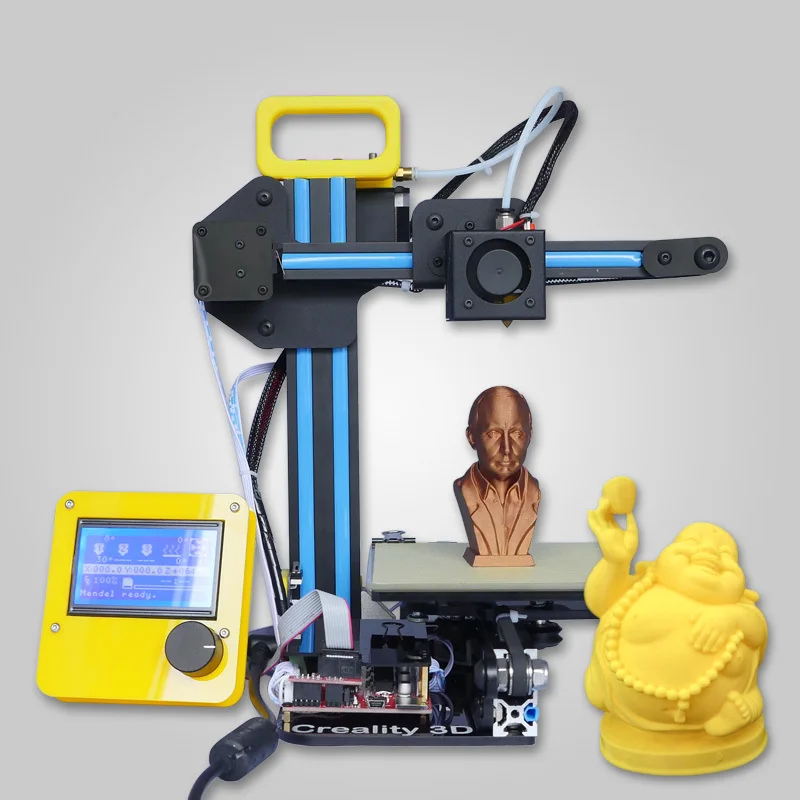 00 00 | $246.00 | See It (Opens in a new window) |
Read Our Creality Ender-3 V2 Review
Flashforge Finder 3D Printer
Best 3D Printer for the Very Tightest Budgets
3.5 Good
Bottom Line:
The Flashforge Finder 3D Printer is moderately priced and offers good print quality, but it proved tricky to get up and running in our tests.
PROS
- Quiet.
- Good print quality.
- Connects via USB 2.0 cable, USB thumb drive, or Wi-Fi.
- Reasonably priced.
CONS
- Some objects pulled off the platform during testing.
- Poor documentation.
- Modest build volume.
- Limited to printing with polylactic acid filament (PLA).
| Sold By | List Price | Price | |
|---|---|---|---|
| Amazon | $729.00 | $729.00 | Check Stock (Opens in a new window) |
Read Our Flashforge Finder 3D Printer Review
Polaroid PlaySmart 3D Printer
Best Budget 3D Printer for Dabbling in Small Objects
3.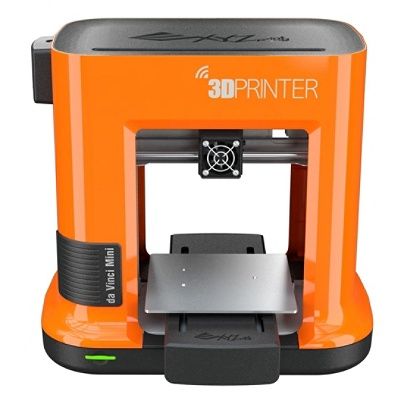 5 Good
5 Good
Bottom Line:
The Polaroid PlaySmart 3D Printer is a compact, stylish 3D printer with above-par overall print quality, but, alas, a tiny build area for the money.
PROS
- Small, lightweight for a desktop 3D printer.
- Easy to set up and use.
- Supports PLA, PETG, and wood composite filaments.
- Multiple-color support.
- Wi-Fi camera monitors print jobs.
- Prints from USB drives, SD cards, or mobile devices.
CONS
- High price for its capabilities.
- Small build area.
- Too-brief warranty.
| Sold By | List Price | Price | |
|---|---|---|---|
| Amazon | $699.00 | $699.00 | See It (Opens in a new window) |
Read Our Polaroid PlaySmart 3D Printer Review
XYZprinting da Vinci Jr. 1.0 A Pro
Best Budget 3D Printer With Closed Design, Roomy Build Area
3.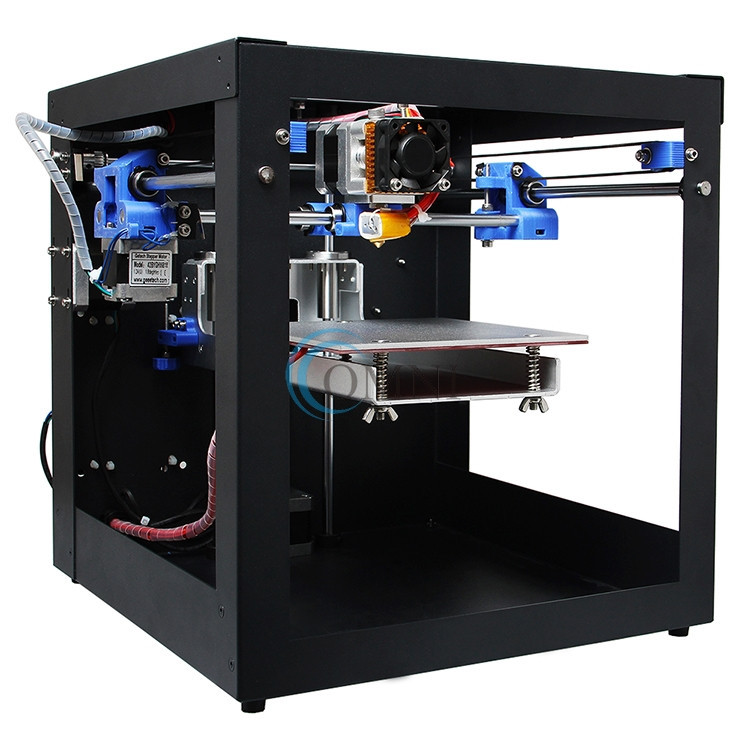 5 Good
5 Good
Bottom Line:
The XYZprinting da Vinci Jr. 1.0 A Pro is a moderately priced closed-frame 3D printer with a large build volume and overall good performance, but a potentially balky filament-feeding system.
PROS
- Spacious build area
- Works with third-party filaments
- Self-leveling print bed
CONS
- Build plate is not heated
- Limited to PLA- and PETG-based filaments
- Guide tube is prone to detaching
| Sold By | List Price | Price | |
|---|---|---|---|
| Amazon | $299.95 | $199.95 | See It (Opens in a new window) |
| Best Buy | $449.95 | $449.95 | Check Stock (Opens in a new window) |
Read Our XYZprinting da Vinci Jr. 1.0 A Pro Review
Monoprice Voxel 3D Printer
Best Budget 3D Printer for Cheap Filament
3. 0 Average
0 Average
Bottom Line:
The Monoprice Voxel is an under-$400 3D printer that's easy to set up and use. It exhibits generally good print quality, but it was unable to print two of our test objects.
PROS
- Easy to set up and use.
- Budget price for printer and filament spools.
- Supports PLA, ABS, and several composite filament types.
- Versatile software.
- Prints over Ethernet or Wi-Fi, or from a USB thumb drive.
CONS
- Frequent misprints on certain test objects.
- Slightly balky touch screen.
| Sold By | List Price | Price | |
|---|---|---|---|
| Amazon | $449.99 | $369.26 | See It (Opens in a new window) |
| Walmart | $429.99 | $369.26 | See It (Opens in a new window) |
Read Our Monoprice Voxel 3D Printer Review
Buying Guide: The Best Cheap 3D Printers for 2022
How to Buy a Cheap 3D Printer
The biggest changes to 3D printers over the last few years have come to the cheaper models.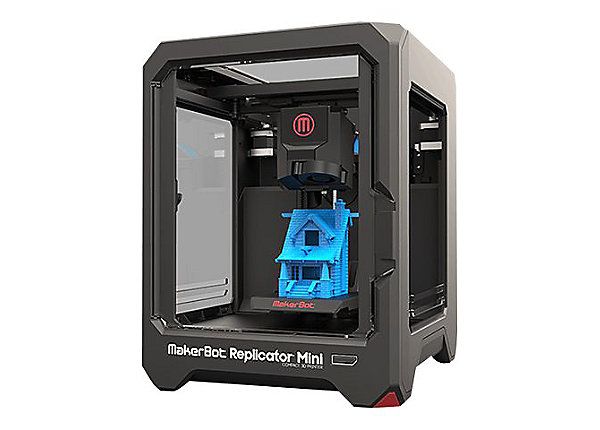 Nowadays, many of those classic, ornery 3D-printing issues have been resolved (most of the time, anyway), even for consumer and bargain-priced 3D printers. Automatic print-bed leveling is the norm, and you can usually remove 3D-printed objects from heated and/or flexible build plates with a minimum of coaxing. And most 3D printer manufacturers have either developed and refined their own software, or have adapted an open-source printing platform such as Cura(Opens in a new window).
Nowadays, many of those classic, ornery 3D-printing issues have been resolved (most of the time, anyway), even for consumer and bargain-priced 3D printers. Automatic print-bed leveling is the norm, and you can usually remove 3D-printed objects from heated and/or flexible build plates with a minimum of coaxing. And most 3D printer manufacturers have either developed and refined their own software, or have adapted an open-source printing platform such as Cura(Opens in a new window).
(Credit: Zlata Ivleva)
What separates more expensive 3D printers from cheap ones ("cheap" defined as $500 or less, for the purposes of this article) is often a select group of features. These include the build volume, the type of frame, the varieties of supported filament, the software, and the connectivity mix. Let's run through those in turn.
What's the Right Build Volume for a 3D Printer?
A 3D printer’s build volume is the maximum dimensions (HWD) of a part that it can print.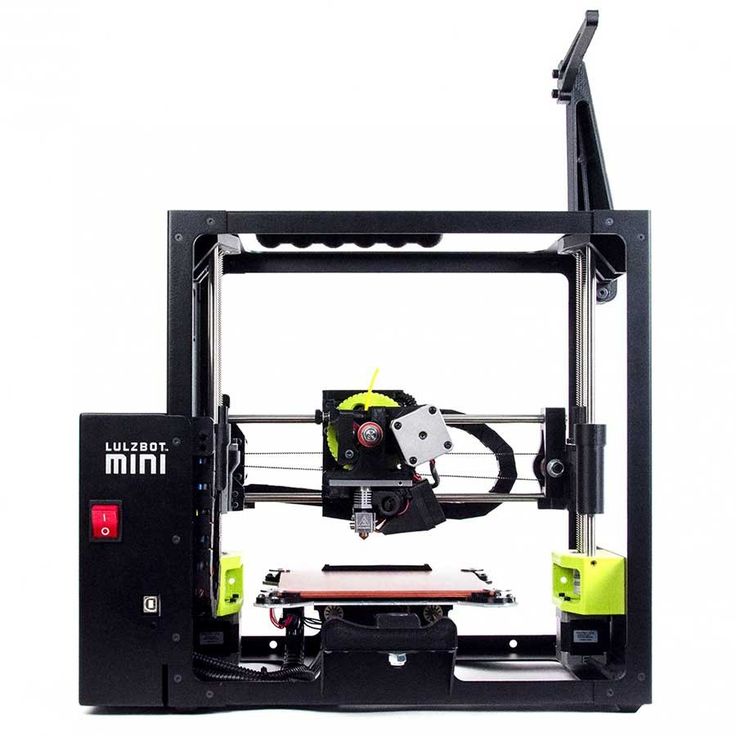 (We say “a part” because a 3D-printed object can consist of multiple parts that are printed, then glued or otherwise pieced together.) While the smallest build volume of any 3D printer we have tested is 3.9 by 3.9 by 4.9 inches, we consider any build volume smaller than 6 by 6 by 6 inches to be small, any between that and 10 by 10 by 10 inches as medium, and any printer with at least one build dimension of more than 10 inches as having a large build volume.
(We say “a part” because a 3D-printed object can consist of multiple parts that are printed, then glued or otherwise pieced together.) While the smallest build volume of any 3D printer we have tested is 3.9 by 3.9 by 4.9 inches, we consider any build volume smaller than 6 by 6 by 6 inches to be small, any between that and 10 by 10 by 10 inches as medium, and any printer with at least one build dimension of more than 10 inches as having a large build volume.
(Credit: Molly Flores)
As a general rule, inexpensive 3D printers have small build volumes, while more expensive ones have larger build volumes. This depends in part on the type of printer. Closed-frame 3D printers—and most semi-open models, which have a rigid top, base, and sides but are open in front and, often, back—tend to have small build volumes, while open-frame printers, lacking as rigid a physical structure, often have relatively large build volumes for the price. You'll want to weigh the build volume against the kinds of objects you will print.
Should I Get an Open-Frame or Closed-Frame 3D Printer?
Which brings us to the frame "form factor" question: open-frame versus closed-frame. Closed-frame 3D printers are boxlike devices, with a rigid base, walls (with a see-through door in front), and top. Among their advantages? They muffle the operating noise, as well as reduce the odor from melted filament (which is potentially an issue with ABS plastic), and they provide some protection for people or pets who might inadvertently touch the hot extruder. A downside: They tend to have smaller build volumes than open-frame 3D printers, which have fewer (often, no) walls to constrict them.
(Credit: Zlata Ivleva)
Low-cost 3D printers include both open-frame and closed-frame models, as well as a few stereolithography printers. If a relatively large build volume is a priority, you’re likely to get more bang for the buck with an open-frame model. Open-frames do have some clear downsides by definition: They tend to be noisy, emit odors when certain plastics are melted, and provide little protection for someone who might touch the hot extruder.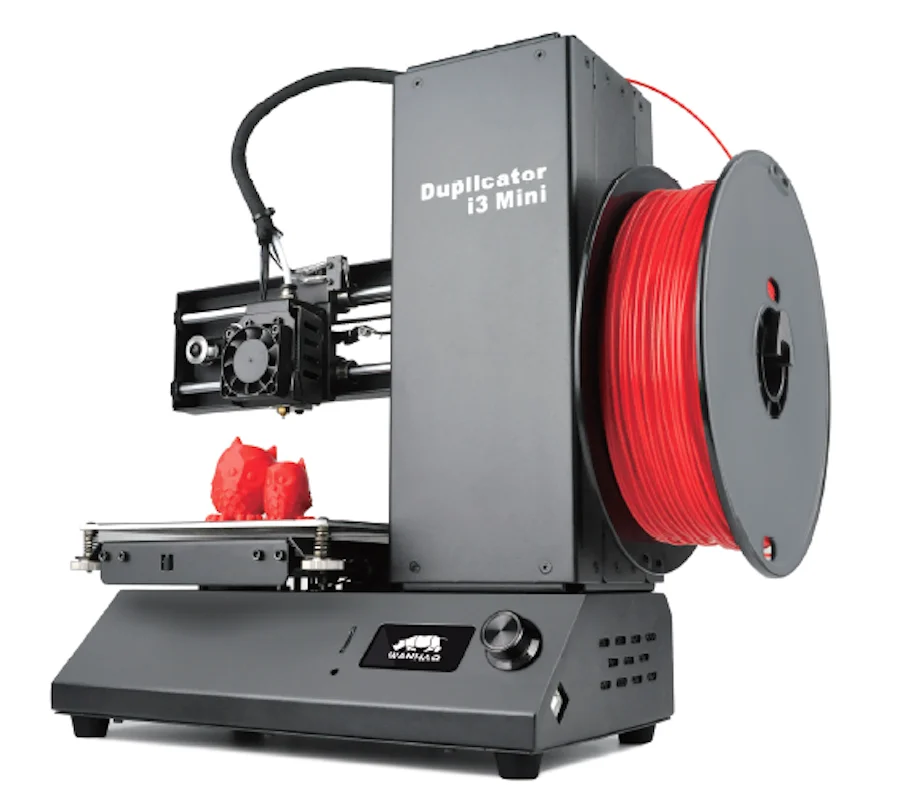
(Credit: Molly Flores)
Also, recognize some potential negatives of open frames, depending on the model. Some require assembly, being essentially kits, and most require more setup care than a closed-frame printer, plus more maintenance to keep them running smoothly. Still, these very traits should not deter—and may even appeal to—hobbyists and DIY folks.
What Should I Look for in 3D Printer Software and Connectivity?
Gone are the days when tinkerers had to cobble together several different programs to get a 3D printer to run. Manufacturers either include their own 3D printing program or modify an existing platform such as the open-source Cura.
3D printing software performs three main functions: processing an object file (resizing, moving, rotating, and in some cases duplicating it), slicing it (into virtual layers, based on your chosen resolution), and printing it. These are almost universally combined into a seamless process. Some high-end printers have software that supports a wider range of settings you can tweak, but even the basic suites work at least reasonably well.
More likely to vary among the cheaper set is the array of connection options from model to model. Nearly all have a USB Type-A port to fit a thumb drive for printing from document files. Most also have a USB Type-B port for connecting directly to a computer, and some offer Wi-Fi, too (or as an alternative), while a handful let you connect via Ethernet to share the printer across a local network.
Some printers support storing 3D files on an SD or microSD card (which may also contain the printer’s system files). Most 3D printer manufacturers (even the discount ones) have a mobile app to launch and monitor print jobs, and a few provide access to cloud services from which you can print.
While high-end 3D printers tend to have an abundance of connection choices, discount models vary widely in their choices. Some are generous and some are basic, so it pays to assess what a given model offers.
What Should I Look for in Filament Support?
Filament support tends to be a key area that separates the cheaper models from the higher-end ones.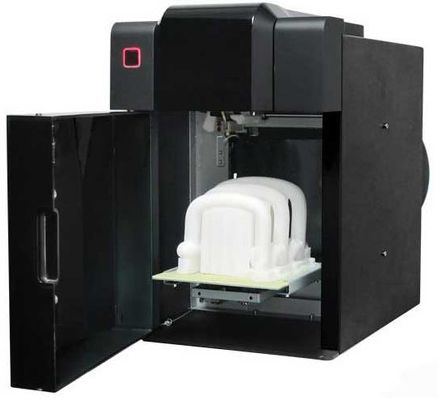 (See our guide to understanding 3D printing filaments for more particulars.) Inexpensive 3D printers tend to support a limited number of plastic filament types, some of them only PLA and/or ABS.
(See our guide to understanding 3D printing filaments for more particulars.) Inexpensive 3D printers tend to support a limited number of plastic filament types, some of them only PLA and/or ABS.
Recommended by Our Editors
3D Printing: What You Need to Know
3D Printer Filaments Explained
(Credit: Molly Flores)
PLA (polylactic acid) is a biodegradable, plant-based polymer, while ABS (acrylonitrile butadiene styrene) is the same tough plastic that Legos are made from. Objects printed from ABS are durable and nontoxic, though the material can be tricky to work with. ABS can emit an acrid, unpleasant odor during printing, and the bottom corners of objects being printed with it have a tendency to curl upward a bit, especially if you are using a non-heated print bed. This can lead to unsightly prints, and/or prints prematurely pulling off the build plate, ruining them.
Many entry-level and low-price 3D printers stick exclusively to PLA. If you want to experiment with a larger variety of filaments—which include water-soluble filament, wood- and metal-laced composites, and both tough and flexible varieties—you may have to pay more, although a few discount models support a wide range of materials.
If you want to experiment with a larger variety of filaments—which include water-soluble filament, wood- and metal-laced composites, and both tough and flexible varieties—you may have to pay more, although a few discount models support a wide range of materials.
Should I Consider a 3D Printing Pen Instead?
Although they aren’t printers per se, inexpensive 3D pens are close kin to 3D printers—using the same filament types and a similar extrusion system—and we include them in the 3D printing category. Rather than tracing out a programmed pattern, you use the 3D pen much like a normal pen, except that you draw with molten plastic. You can trace a pattern or draw freehand, and even draw in three dimensions as the plastic quickly solidifies and hardens once extruded.
(Credit: 3Doodler)
Most 3D pens cost less than $100, and some cost $50 or less. At a glance, 3D pens may appear to be toys, but some artists and craftspeople have taken to them, as it is possible to make quite complicated and beautiful objects with them.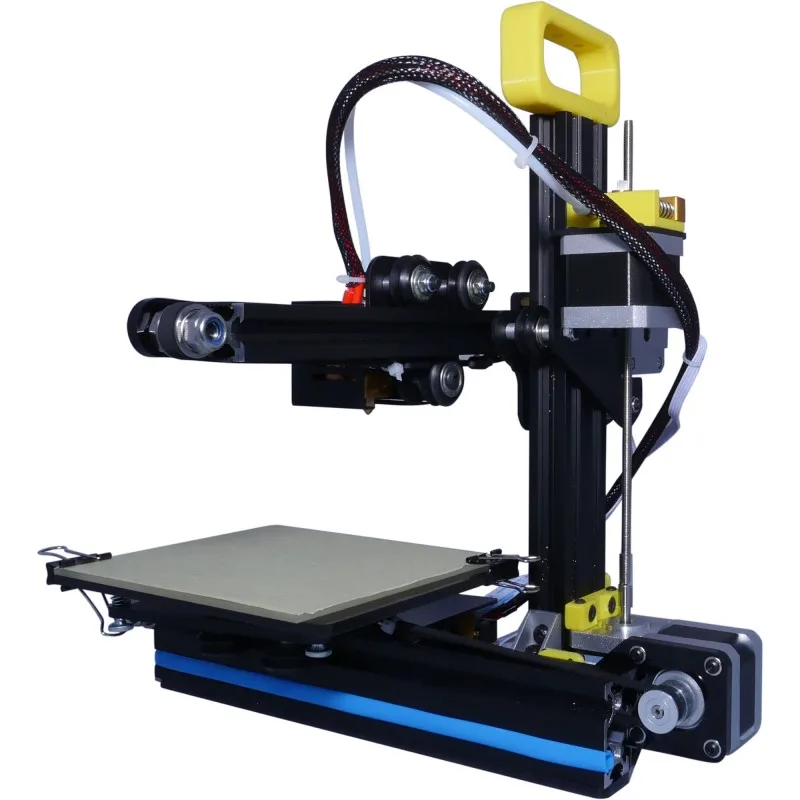 If your aim in 3D printing is something closer to freehand design and free expression than computer-centric, structured, and repeatable output, you might give one a try.
If your aim in 3D printing is something closer to freehand design and free expression than computer-centric, structured, and repeatable output, you might give one a try.
So, What Is the Best Cheap 3D Printer to Buy?
Buying a budget 3D printer needn’t mean a world of sacrifice. Plenty of capable and reliable models sell at less than $500, and while they may not be as feature-rich as their more expensive cousins, there's no sense in paying for things you don’t need.
Many casual 3D-printing experimenters will be fine with printing over a USB cable or from a thumb drive, and sticking to PLA may be the best choice for a starter 3D printer. If you focus just on the features you want, you may be pleasantly surprised at what you find. Below, check out a spec breakdown of the best under-$500 3D printers we have reviewed, paralleling our picks above. Also, for a look at the broader market, see our guide to our favorite 3D printers overall.
Choosing the best 3D printer for printing miniatures
3DPrintStory Reviews Choosing the best 3D printer for printing miniatures
The use of 3D printers for printing game miniatures is gaining more and more popularity today. As the price of 3D printers continues to fall, it is likely that the demand for 3D printed game miniatures will only continue to rise.
As the price of 3D printers continues to fall, it is likely that the demand for 3D printed game miniatures will only continue to rise.
If you pick the right 3D printer, you can get amazing 3D models for board games or to put an inspirational action figure from your favorite game on your desktop.
Today's desktop 3D printers have become reliable, easy to use and provide decent quality finished products.
How to choose a 3D miniature printer?
There is a wide range of desktop 3D printers that can be used for 3D miniature printing at home. And if you study the market a bit, or at least the options below, you can get great detailed 3D models.
With the right 3D printer, you can print your own figurines and even create your own board games.
If you don't want to design 3D models of figurines from scratch (and this will really require some skills and time from you), then you can find interesting 3D models on sites with free 3D printable models.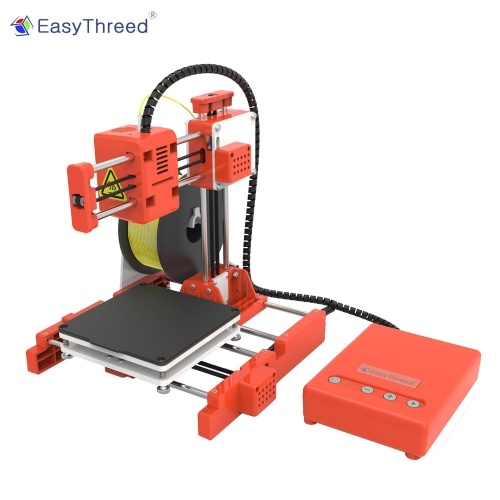 After downloading the model, you can immediately print it or edit it before 3D printing for your own needs. We also recommend that you familiarize yourself with interesting 3D models from Dutchmogul. Perhaps in his wonderful collection you will find something interesting for yourself.
After downloading the model, you can immediately print it or edit it before 3D printing for your own needs. We also recommend that you familiarize yourself with interesting 3D models from Dutchmogul. Perhaps in his wonderful collection you will find something interesting for yourself.
To get the same level of detail as the thumbnails above, your 3D printer must meet certain criteria. The most important feature of a 3D printer to consider is the level of detail it can reproduce. This criterion is formed based on the following parameters:
Nozzle diameter
To create a 3D miniature, heated plastic is extruded through a hole. Orifice is the diameter of the nozzle. Make sure the 3D printer nozzle size is less than 0.4mm.
XY Movement Accuracy
Consideration should be given to the accuracy of the 3D printer's X and Y movement.
Layer Thickness
Layer Thickness is the height of each layer of heated plastic that is used to create a 3D figurine or miniature.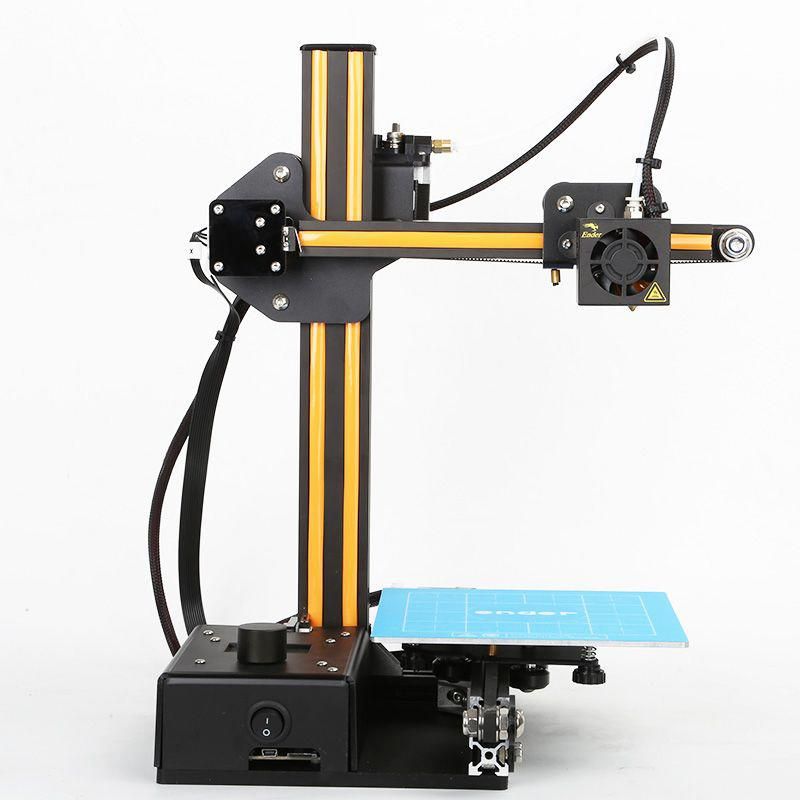 To get a more detailed model, you need to reduce the layer thickness. However, the low thickness means that 3D printing will take longer. In order to print a detailed miniature, you will most likely need a 3D printer that can print with layer thicknesses of 100 microns (0.1 mm) or less.
To get a more detailed model, you need to reduce the layer thickness. However, the low thickness means that 3D printing will take longer. In order to print a detailed miniature, you will most likely need a 3D printer that can print with layer thicknesses of 100 microns (0.1 mm) or less.
Material type
The most common materials used in 3D printers are ABS or PLA. To get a good surface, after 3D printing, it should be post-processed. If you are using ABS plastic, you can sand the miniature and steam it in acetone to get a smooth surface. It is also worth paying attention to PETG plastics, which are gaining more and more attention and positive user reviews.
Thumbnail size (scale)
If you want to start 3D printing game miniatures, think about the size you would like to get.
A 28mm (~1:58 scale) or 54mm (~1:32 scale) miniature can be made with a standard desktop 3D printer that melts plastic filament. To make a smaller miniature, you will need an SLA Resin printer, which uses liquid resin and strengthens it.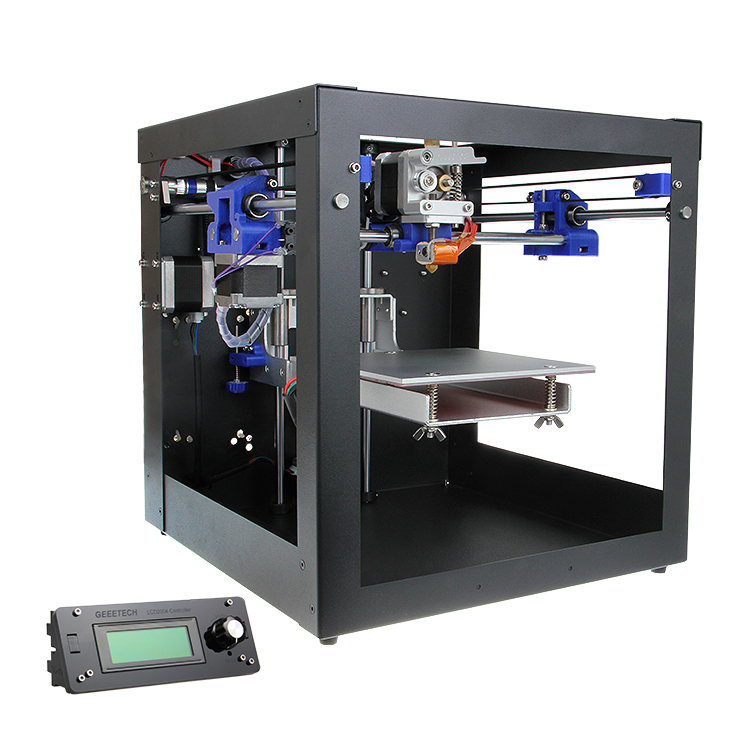
In addition to the figurine, you can also print larger models. 3D printing large models such as houses, huts, castles, trees, and tanks will require more expensive 3D printers that provide faster speeds with good 3D print quality. But there is an important point in the choice. It is better to choose high-quality 3D printing than a large one. You can always separate larger models for printing and then join them together using the same adhesive. The result will be much better than lower quality 3D printing on a 3D printer with a large workspace.
HICTOP CR-10S 3D printer
Value for money, the Hictop CR-10S is one of the best and most affordable budget 3D printers on the market. The Prusa i3 3D printer was taken as the basis for the design.
The Hictop printer uses quality materials for the power supply, motherboard and motion control systems. The metal framework is a rigid and strong design.
The Hictop printer will arrive unassembled, but assembly is easy. You will have to essentially screw in four bolts and connect the necessary wires. That is, you can proceed directly to 3D printing almost immediately after purchase.
You will have to essentially screw in four bolts and connect the necessary wires. That is, you can proceed directly to 3D printing almost immediately after purchase.
The "S" at the end of the CR-10S stands for two Z-axis lead screws and stepper motors.
Dual axis system improves extruder movement accuracy. As a result, you naturally get more accurate 3D printing overall. This is an excellent inexpensive 3D printer that is suitable for 3D printing miniatures and figurines for board games.
The Hictop 3D printer has a mechanism to control the remaining amount of plastic. If the plastic runs out, the printer will go into pause mode and after feeding new material, you can continue printing from the area where you left off. This is a particularly relevant feature for printing large-scale 3D models.
These 3D printers are quite popular, so you will find a lot of information and tips on how to use them online. In addition, thanks to an active community, the Hictop CR-10S has a large number of modifications and upgrades that you can implement yourself and improve its already decent 3D printing quality.
Hictop CR-10S is a quality and affordable 3D printer, which is definitely suitable for 3D printing miniatures and figures of characters from your favorite games or movies.
FLASHFORGE CREATOR PRO 3D printer
FlashForge 3D Printer Creator Pro took inspiration from Makerbot Replica.
A nice feature of the FlashForge 3D printer is that it includes all the custom enhancements from Makerbot. These upgrades include:
- Metal desktop supports. Thus, the working table became more stable during heating and assembling.
- Plastic-coated knobs for easy workbench calibration.
- The Central Processing Unit (CPU) supports Sailfish firmware which allows automatic calibration. In addition, the CPU helps regulate heat and delivers higher quality 3D prints.
The above features make the Creator Pro an excellent miniature 3D printer.
In addition, this 3D printer is made in a closed case, which allows you to print ABS plastic with much less difficulty.
Creator Pro allows you to print two colors at the same time. If you plan to paint the finished model in the future, then you don’t really need this feature, but in general it gives you much more options than the standard analogues with one extruder.
Since the Creator Pro is based on the Makerbot Replica, there is a lot of information available on the internet about this 3D printer.
3D printer SINDOH DP200 3DWOX
If you are looking for a reliable 3D printer for printing miniatures, then you should pay attention to Sindoh DP200 3DWOX. This is the best choice if you want to make 3D mini figures.
This 3D printer is easy to use, suitable even for beginners in the world of 3D printing. Below are some of its features:
- 3D printing table covered with aluminum PTFE.
- 3D printing resolution is 50 microns (0.05 mm).
- Equipped with a high efficiency particulate air filter and a closed chamber for 3D printing, which is especially good when using ABS plastics.
- Easy to use material cartridge chamber.
- Sindoh does an excellent job of printing minifigures in high detail.
One of the disadvantages of the Sindoh DP200 printer is that it can only use manufacturer's filament. Consequently, you will pay more money for cartridges because you will not be able to use materials from other manufacturers. The price of these cartridges, of course, is higher than analogues.
Otherwise, the Sindoh DP200 3DWOX 3D printer is a great option for high quality 3D printing of detailed models.
DREMEL DIGILAB 3D printer
The use of SLA technology for 3D printing helps to obtain miniature products of very high quality. SLA also helps print miniature parts as small as 28mm. The price of this wonderful 3D printer is comparable to the cost of a laptop.
SLA printing differs from FFF printing in the very essence of the processes. During SLA 3D printing, liquid resin is baked using a UV laser. The formation of the part looks like a gradual lifting of the finished model and a bath with liquid material.
Industrial 3D stereolithography printers now available at home! The Dremel Digilab 3D printer has proven itself as a hobby printer, which differs from expensive industrial analogues in its exceptionally smaller workspace.
Key Features of the Dremel Digilab 3D Printer:
- The minimum wall thickness of the 3D model is 25 µm (0.025mm).
- Faster 3D printing compared to FFF 3D printers.
- Excellent surface quality of the finished 3D model.
Digilab is a great SLA 3D printer. It is easy to use and, according to user reviews, reliable.
With this 3D printer, you can use resins to make investment casting molds. It can also be used to make jewelry by casting metals.
Some disadvantages of using SLA for 3D printing:
- It's expensive. The resin needs to be updated, as over time it ages and loses the necessary properties.
- Resins require maintenance. Make sure you start 3D printing only after the balloons created by adding resin to the tank are gone.
When you're done printing, you should clean the tank thoroughly to remove cured resin, which can affect the quality of subsequent 3D prints.
- When cleaning this 3D printer, be careful to use latex gloves and alcohol.
Conclusions
This article is to help you choose a desktop 3D printer to print board game models or just beautiful fantasy characters and landscapes. 3D printers and board games are a very good combination, and the models listed above are a good choice if you want to create your own game miniatures.
We hope you found this overview helpful. Good luck with your ideas in the world of 3D printing!
3D printers | 220.lv
3D printers for printing 3D objects will help everyone to discover the possibilities of modern technologies and create unique objects from innovative materials. The possibilities of printers for 3d printing are almost limitless, having mastered all the functions of the device, you will be able to print objects with a high degree of detail and different colors. A powerful and accurate 3D printer, in accordance with a three-dimensional template, creates an object of a given size and shape, in any number of copies. There are various printing technologies on a 3D printer, and thermoplastics, nylon, plastic filaments, and others are used as consumables. Various models of 3D printers to buy in Latvia are offered by our online store. Check out the range of available 3D printers to find the best solution for your ideas.
Show more Show less
Filter byView product list Cheapest at the top
This item is part of the "Where to go for Christmas gifts?" campaign. More information: https://220.lv/ru/t/main-campaign
7 54 € / month 191 00 €
Add to cart
Creality UW-01 washer/dryer
Type: 3D printers
Add to Compare
9 40 € / month 238 00 €
Add to cart
FAST DELIVERY
Gembird 3DP-GEMMA
Type: 3D printers
Add to Compare
NEW
39 89 € / month 1 010 00 €
Add to cart
3D printer
Type: 3D printers
Add to Compare
This item is part of the "Where to go for Christmas gifts?" campaign. More information: https://220.lv/ru/t/main-campaign
2 102 00 €
Add to cart
Flashforge Guider IIS/2S v2
Type: 3D printers
Add to Compare
Item sold out
3D printer
Type: 3D printers
How to choose a printer that will be cheap to operate?
Homework, plane tickets, paperwork... whatever you need to print, there are quality printers available that can handle it all to the highest standard. The struggle between the best brands in the world, including HP, Canon, Epson and others, has made prices for
Gifts for photography lovers To take a great picture, you need not only a good composition, but also a lot of additional accessories - both amateurs and professionals will confirm this. If you are looking for a gift for photography enthusiasts, we have selected the best ideas related to this area of interest. Gifts for impressive shots Read more
How to choose a printer? Essays, coupons, plane tickets or photographs - no matter what you need to print - in any case, you need a printer. It goes without saying that it is very convenient to have it at home, so we suggest ordering a printer via the Internet at the 220.lv store. Printer prices here Read more
What is a 3D printer? A 3D printer that can print real material objects is one of the most amazing technological advances of recent years. The equipment has already been successfully integrated into many industries (scientific research, medicine, manufacturing, education, architecture, etc.) and is increasingly being purchased Read more
Originally designed for professional use, the 3D printers are now becoming household appliances available to a wide range of users. In our online store there are models of 3D printers of various configurations, sizes and capacities for 3D printing of volumetric objects of any shape, among which you will find equipment according to your needs and budget.
Multipurpose 3D printers
- Compact, easy to use printer XYZprinting is great for beginners, compatible with a variety of consumables and able to create your own 3D models using dedicated XYZmaker applications.
- Printer XYZprinting da Vinci Color mini will print high-quality color three-dimensional models. The compact size of the printer fits comfortably on any desktop or office desk. Free 3D modeling software and 3D model gallery included.
- 3D printer Creality3D Ender 5 Plus is an FDM printer with square frame and tempered glass printing surface that prints accurate models with good surface quality. The full color touch screen provides intuitive and easy device control.
- 3D printer Flashforge Guider IIS with built-in HD camera allows you to control the execution of the job remotely. This is an industrial quality desktop 3D printer with high resolution and precision.
Learn more


